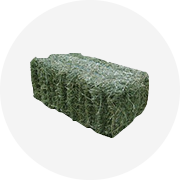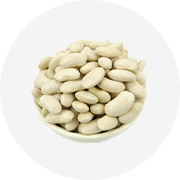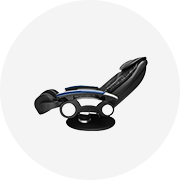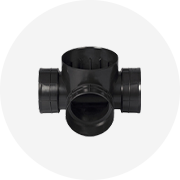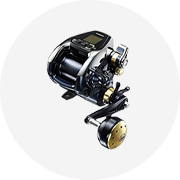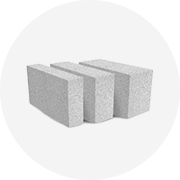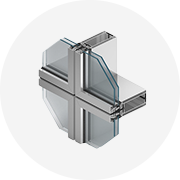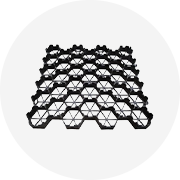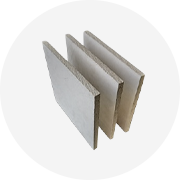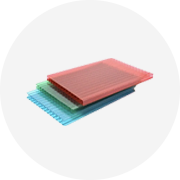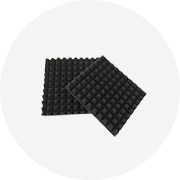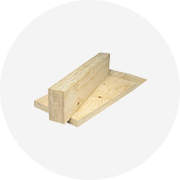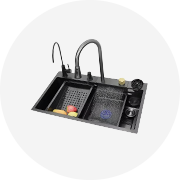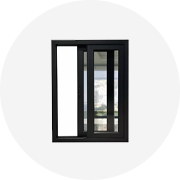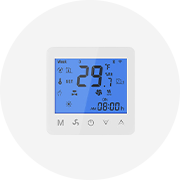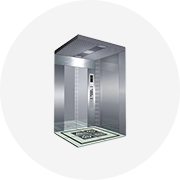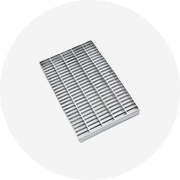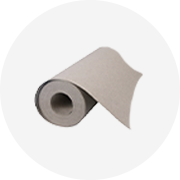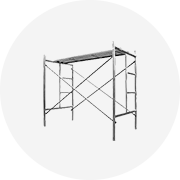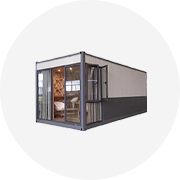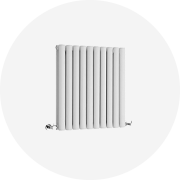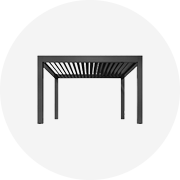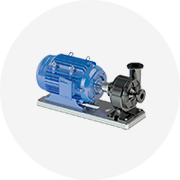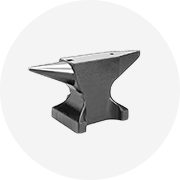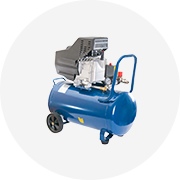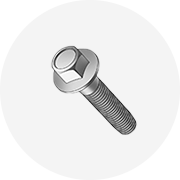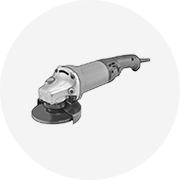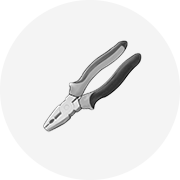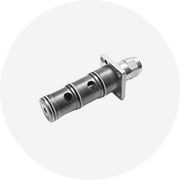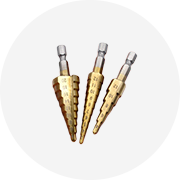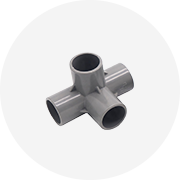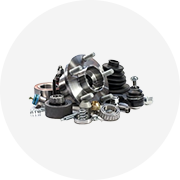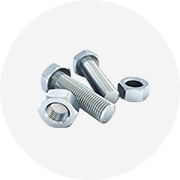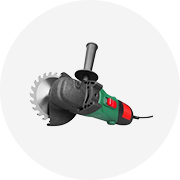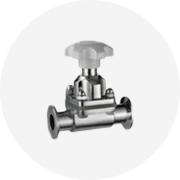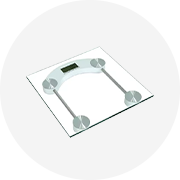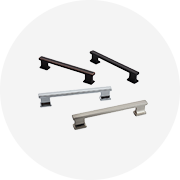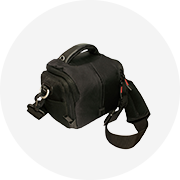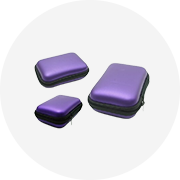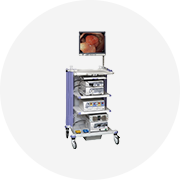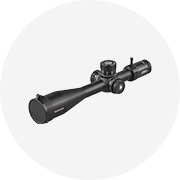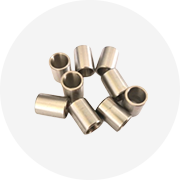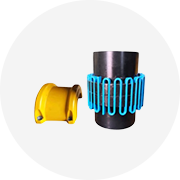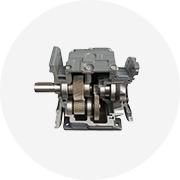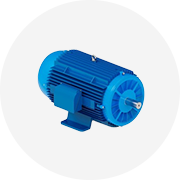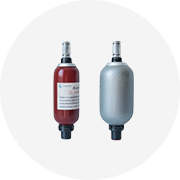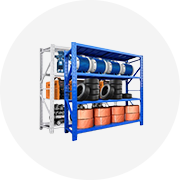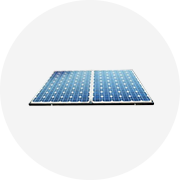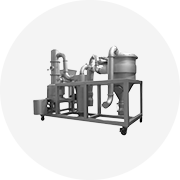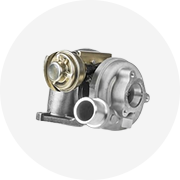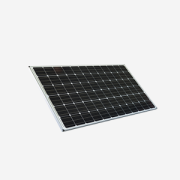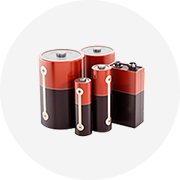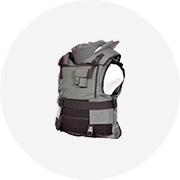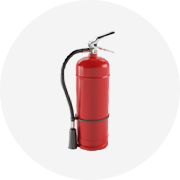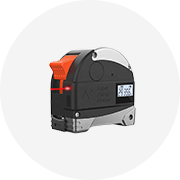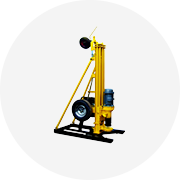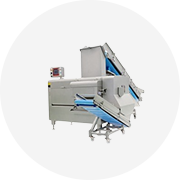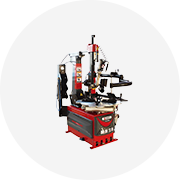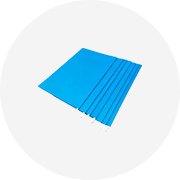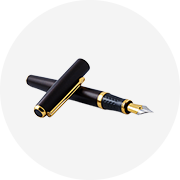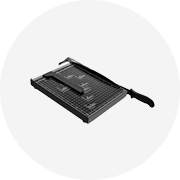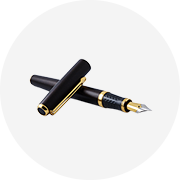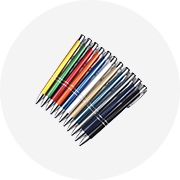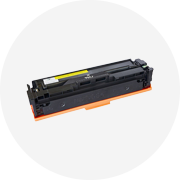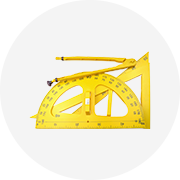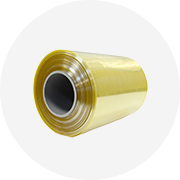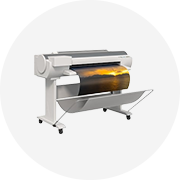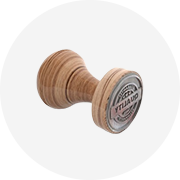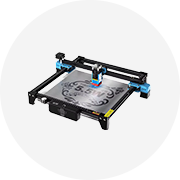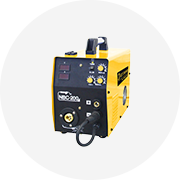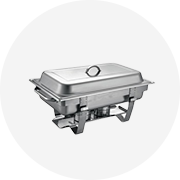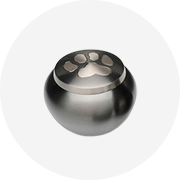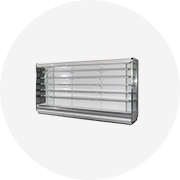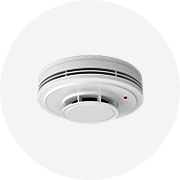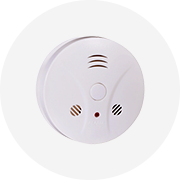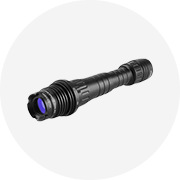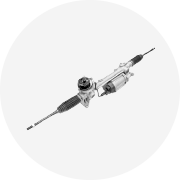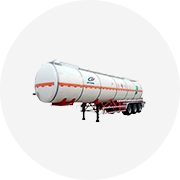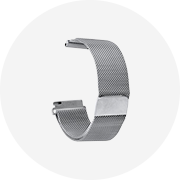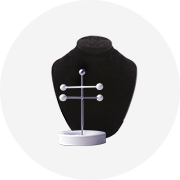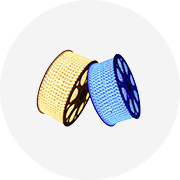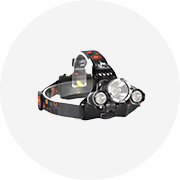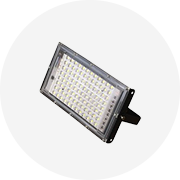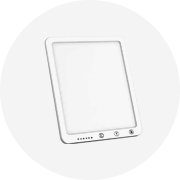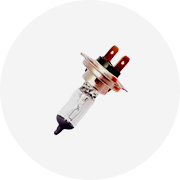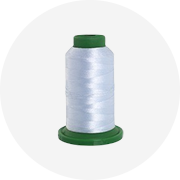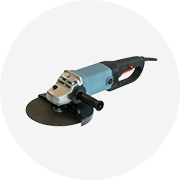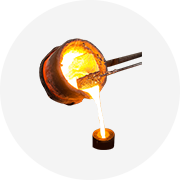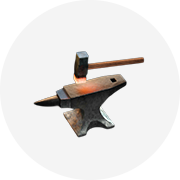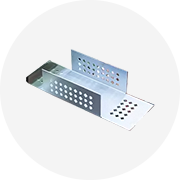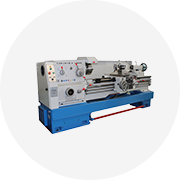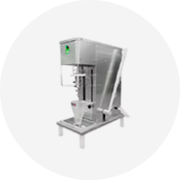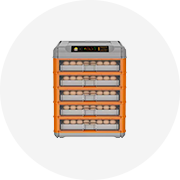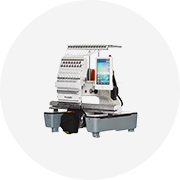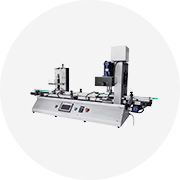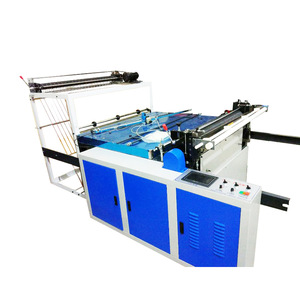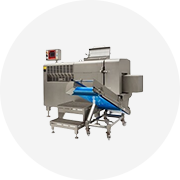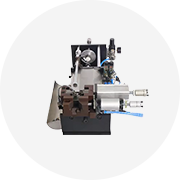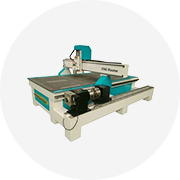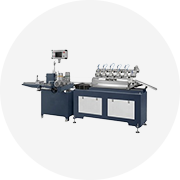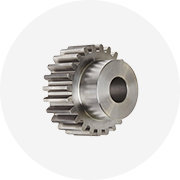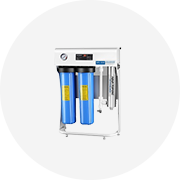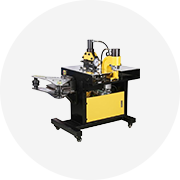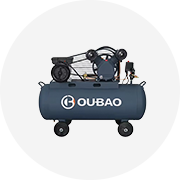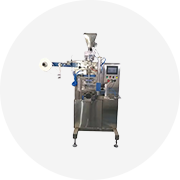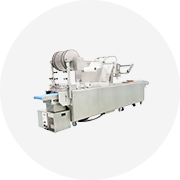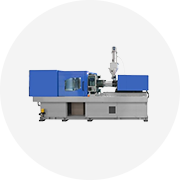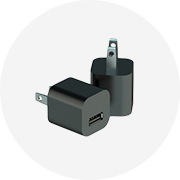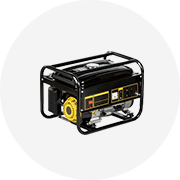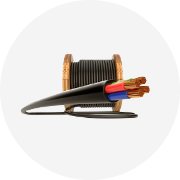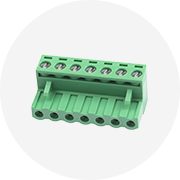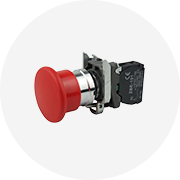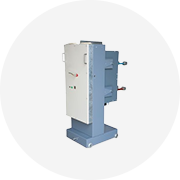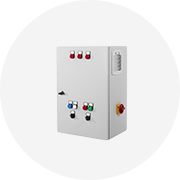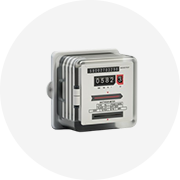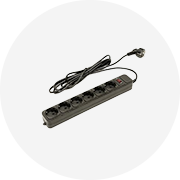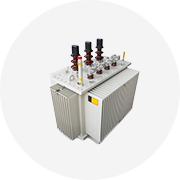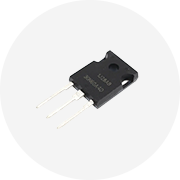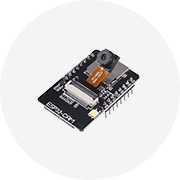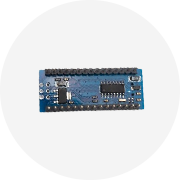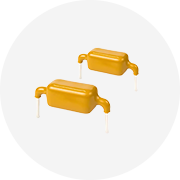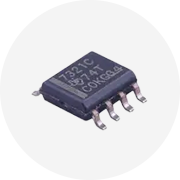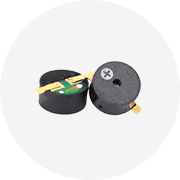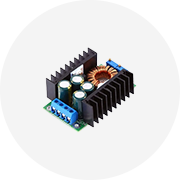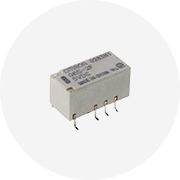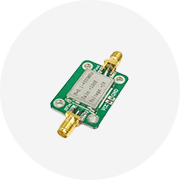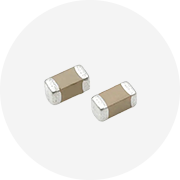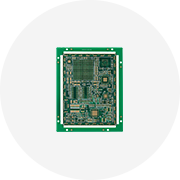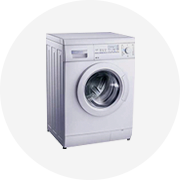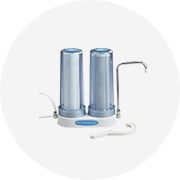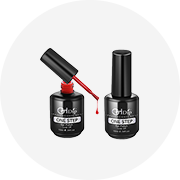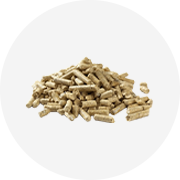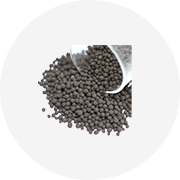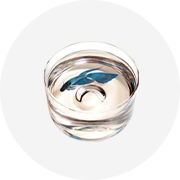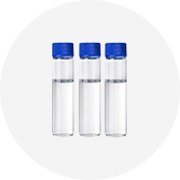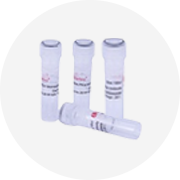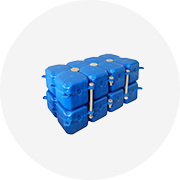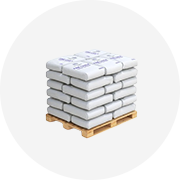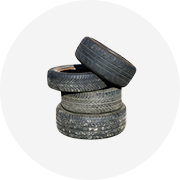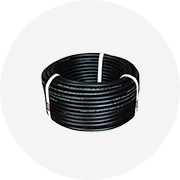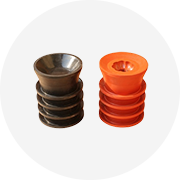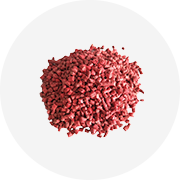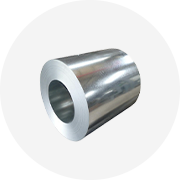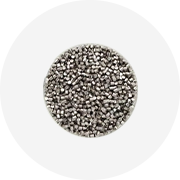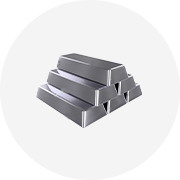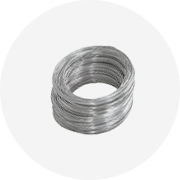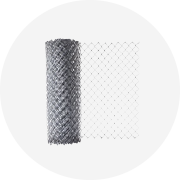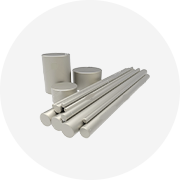-
 Agriculture
Agriculture
-
 Health-Care
Health-Care
-
 Environment
Environment
-
 Construction-Real-Estate
Construction-Real-Estate
-
 Tools-Hardware
Tools-Hardware
-
 Home-Garden
Home-Garden
-
 Furniture
Furniture
-
 Luggage-Bags-Cases
Luggage-Bags-Cases
-
 Medical-devices-Supplies
Medical-devices-Supplies
-
 Gifts-Crafts
Gifts-Crafts
-
 Sports-Entertainment
Sports-Entertainment
-
 Food-Beverage
Food-Beverage
-
 Vehicles-Transportation
Vehicles-Transportation
-
 Power-Transmission
Power-Transmission
-
 Material-Handling
Material-Handling
-
 Renewable-Energy
Renewable-Energy
-
 Safety
Safety
-
 Testing-Instrument-Equipment
Testing-Instrument-Equipment
-
 Construction-Building-Machinery
Construction-Building-Machinery
-
 Pet-Supplies
Pet-Supplies
-
 Personal-Care-Household-Cleaning
Personal-Care-Household-Cleaning
-
 Vehicle-Accessories-Electronics-Tools
Vehicle-Accessories-Electronics-Tools
-
 School-Office-Supplies
School-Office-Supplies
-
 Packaging-Printing
Packaging-Printing
-
 Mother-Kids-Toys
Mother-Kids-Toys
-
 Business-Services
Business-Services
-
 Commercial-Equipment-Machinery
Commercial-Equipment-Machinery
-
 Apparel-Accessories
Apparel-Accessories
-
 Security
Security
-
 Shoes-Accessories
Shoes-Accessories
-
 Vehicle-Parts-Accessories
Vehicle-Parts-Accessories
-
 Jewelry-Eyewear-Watches-Accessories
Jewelry-Eyewear-Watches-Accessories
-
 Lights-Lighting
Lights-Lighting
-
 Fabric-Textile-Raw-Material
Fabric-Textile-Raw-Material
-
 Fabrication-Services
Fabrication-Services
-
 Industrial-Machinery
Industrial-Machinery
-
 Consumer-Electronics
Consumer-Electronics
-
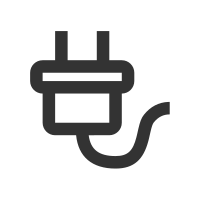 Electrical-Equipment-Supplies
Electrical-Equipment-Supplies
-
 Electronic-Components-Accessories-Telecommunications
Electronic-Components-Accessories-Telecommunications
-
 Home-Appliances
Home-Appliances
-
 Beauty
Beauty
-
 Chemicals
Chemicals
-
 Rubber-Plastics
Rubber-Plastics
-
 Metals-Alloys
Metals-Alloys
- Masonry Materials
- Curtain Walls & Accessories
- Earthwork Products
- Fireproofing Materials
- Heat Insulation Materials
- Plastic Building Materials
- Building Boards
- Soundproofing Materials
- Timber
- Waterproofing Materials
- Balustrades & Handrails
- Bathroom & Kitchen
- Flooring & Accessories
- Tiles & Accessories
- Door, Window & Accessories
- Fireplaces & Stoves
- Floor Heating Systems & Parts
- Stairs & Stair Parts
- Ceilings
- Elevators & Escalators
- Stone
- Countertops, Vanity Tops & Table Tops
- Mosaics
- Metal Building Materials
- Multifunctional Materials
- Ladders & Scaffoldings
- Mouldings
- Corner Guards
- Decorative Films
- Formwork
- Building & Industrial Glass
- Other Construction & Real Estate
- Wallpapers/Wall panels
- HVAC System & Parts
- Outdoor Facilities
- Prefabricated Buildings
- Festive & Party Supplies
- Bathroom Products
- Household Sundries
- Rain Gear
- Garden Supplies
- Household Cleaning Tools & Accessories
- Lighters & Smoking Accessories
- Home Storage & Organization
- Household Scales
- Smart Home Improvement
- Home Textiles
- Kitchenware
- Drinkware & Accessories
- Dinnerware, Coffee & Wine
- Home Decor
- Golf
- Fitness & Body Building
- Amusement Park Facilities
- Billiards, Board Game,Coin Operated Games
- Musical Instruments
- Outdoor Affordable Luxury Sports
- Camping & Hiking
- Fishing
- Sports Safety&Rehabilitation
- Ball Sports Equipments
- Water Sports
- Winter Sports
- Luxury Travel Equipments
- Sports Shoes, Bags & Accessories
- Cycling
- Other Sports & Entertainment Products
- Artificial Grass&Sports Flooring&Sports Court Equipment
- Scooters
- Food Ingredients
- Honey & Honey Products
- Snacks
- Nuts & Kernels
- Seafood
- Plant & Animal Oil
- Beverages
- Fruit & Vegetable Products
- Frog & Escargot
- Bean Products
- Egg Products
- Dairy Products
- Seasonings & Condiments
- Canned Food
- Instant Food
- Baked Goods
- Other Food & Beverage
- Meat & Poultry
- Confectionery
- Grain Products
- Feminie Care
- Hair Care & Styling
- Body Care
- Hands & Feet Care
- Hygiene Products
- Men's Grooming
- Laundry Cleaning Supplies
- Travel Size & Gift Sets
- Room Deodorizers
- Other Personal Care Products
- Pest Control Products
- Special Household Cleaning
- Floor Cleaning
- Kitchen & Bathroom Cleaning
- Oral Care
- Bath Supplies
- Yellow Pages
- Correction Supplies
- Office Binding Supplies
- Office Cutting Supplies
- Board Erasers
- Office Adhesives & Tapes
- Education Supplies
- Pencil Cases & Bags
- Notebooks & Writing Pads
- File Folder Accessories
- Calendars
- Writing Accessories
- Commercial Office Supplies
- Pencil Sharpeners
- Pens
- Letter Pad/Paper
- Paper Envelopes
- Desk Organizers
- Pencils
- Markers & Highlighters
- Filing Products
- Art Supplies
- Easels
- Badge Holder & Accessories
- Office Paper
- Printer Supplies
- Book Covers
- Other Office & School Supplies
- Stationery Set
- Boards
- Clipboards
- Stamps
- Drafting Supplies
- Stencils
- Electronic Dictionary
- Books
- Map
- Magazines
- Calculators
- Baby & Toddler Toys
- Educational Toys
- Classic Toys
- Dress Up & Pretend Play
- Toy Vehicle
- Stuffed Animals & Plush Toys
- Outdoor Toys & Structures
- Balloons & Accessories
- Baby Food
- Children's Clothing
- Baby Supplies & Products
- Maternity Clothes
- Kids Shoes
- Baby Care
- Novelty & Gag Toys
- Dolls & Accessories
- Puzzle & Games
- Blocks & Model Building Toys
- Toddler Clothing
- Baby Clothing
- Kids' Luggage & Bags
- Arts, Crafts & DIY Toys
- Action & Toy Figures
- Baby Appliances
- Hobbies & Models
- Remote Control Toys
- Promotional Toys
- Pregnancy & Maternity
- Hygiene Products
- Kid's Textile&Bedding
- Novelty & Special Use
- Toy Weapons
- Baby Gifts
- Baby Storage & Organization
- Auto Drive Systems
- ATV/UTV Parts & Accessories
- Marine Parts & Accessories
- Other Auto Parts
- Trailer Parts & Accessories
- Auto Transmission Systems
- Train Parts & Accessories
- Universal Parts
- Railway Parts & Accessories
- Auto Brake Systems
- Aviation Parts & Accessories
- Truck Parts & Accessories
- Auto Suspension Systems
- Auto Lighting Systems
- New Energy Vehicle Parts & Accessories
- Auto Steering Systems
- Wheels, Tires & Accessories
- Bus Parts & Accessories
- Auto Performance Parts
- Cooling System
- Go-Kart & Kart Racer Parts & Accessories
- Air Conditioning Systems
- Heavy Duty Vehicle Parts & Accessories
- Auto Electrical Systems
- Auto Body Systems
- Auto Engine Systems
- Container Parts & Accessories
- Motorcycle Parts & Accessories
- Refrigeration & Heat Exchange Equipment
- Machine Tool Equipment
- Food & Beverage Machinery
- Agricultural Machinery & Equipment
- Apparel & Textile Machinery
- Chemical Machinery
- Packaging Machines
- Paper Production Machinery
- Plastic & Rubber Processing Machinery
- Industrial Robots
- Electronic Products Machinery
- Metal & Metallurgy Machinery
- Woodworking Machinery
- Home Product Manufacturing Machinery
- Machinery Accessories
- Environmental Machinery
- Machinery Service
- Electrical Equipment Manufacturing Machinery
- Industrial Compressors & Parts
- Tobacco & Cigarette Machinery
- Production Line
- Used Industrial Machinery
- Electronics Production Machinery
- Other Machinery & Industrial Equipment
- Camera, Photo & Accessories
- Portable Audio, Video & Accessories
- Television, Home Audio, Video & Accessories
- Video Games & Accessories
- Mobile Phone & Accessories
- Electronic Publications
- Earphone & Headphone & Accessories
- Speakers & Accessories
- Smart Electronics
- TV Receivers & Accessories
- Mobile Phone & Computer Repair Parts
- Chargers, Batteries & Power Supplies
- Used Electronics
- VR, AR, MR Hardware & Software
- Projectors & Presentation Equipments
- Other Consumer Electronics
- Cables & Commonly Used Accessories
- Computer Hardware & Software
- Displays, Signage and Optoelectronics
- Discrete Semiconductors
- Wireless & IoT Module and Products
- Telecommunications
- Connectors, Terminals & Accessories
- Development Boards, Electronic Modules and Kits
- Circuit Protection
- Sensors
- Isolators
- Audio Components and Products
- Integrated Circuits
- Power Supplies
- Relays
- RF, Microwave and RFID
- Electronic Accessories & Supplies
- Passive Components
- PCB & PCBA
- Air Quality Appliances
- Home Appliance Parts
- Heating & Cooling Appliances
- Small Kitchen Appliances
- Laundry Appliances
- Water Heaters
- Water Treatment Appliances
- Refrigerators & Freezers
- Personal Care & Beauty Appliances
- Major Kitchen Appliances
- Cleaning Appliances
- Second-hand Appliances
- Smart Home Appliances
- Other Home Appliances
- Energy Chemicals
- Inorganic Chemicals
- Basic Organic Chemicals
- Agrochemicals
- Admixture & Additives
- Catalysts & Chemical Auxiliary Agents
- Pigments & Dyestuff
- Coating & Paint
- Daily Chemicals
- Polymer
- Organic Intermediate
- Adhesives & Sealants
- Chemical Waste
- Biological Chemical Products
- Surface Treatment Chemicals
- Painting & Coating
- Chemical Reagents
- Flavor & Fragrance
- Non-Explosive Demolition Agents
- Other Chemicals
- Custom Chemical Services
PCB & PCBA
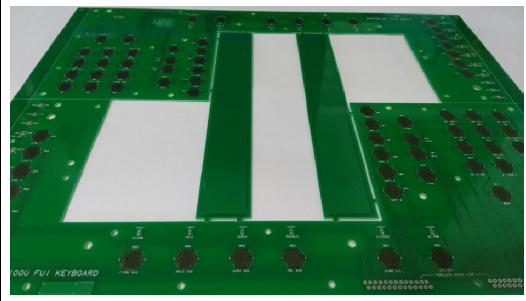
Multilayer PCB Fabrication Addressing Challenges In Miniaturization And Thermal Management
In the relentless pursuit of technological advancement, the electronics industry is perpetually driven by the demands for smaller, faster, and more powerful devices. This trend places immense pressure on the very foundation of modern electronics: the printed circuit board (PCB). While single or double-layer boards once sufficed, the complexity of contemporary systems, from smartphones to advanced medical equipment and autonomous vehicles, necessitates a more sophisticated solution. This is where multilayer PCBs come to the forefront. These intricate laminates, consisting of three or more conductive layers, are the unsung heroes enabling the high-density integration essential for miniaturization. However, this increased complexity brings forth two of the most critical and interconnected challenges in PCB fabrication: achieving extreme miniaturization and managing the significant thermal loads that result from packing more power into a smaller space. Successfully addressing these challenges is not merely an engineering goal; it is a fundamental requirement for the next generation of electronic innovation.
Advanced Materials and Lamination Techniques
The foundation of overcoming miniaturization and thermal challenges lies in the selection and processing of materials. Traditional FR-4 epoxy laminates, while cost-effective, often fall short in high-frequency performance and thermal endurance. To meet modern demands, fabricators are increasingly turning to high-performance materials. These include polyimide, which offers excellent thermal stability and flexibility, and ceramics-filled PTFE composites, renowned for their superior high-frequency characteristics. For thermal management, metal-core PCBs (MCPCBs), particularly those with aluminum or copper substrates, are employed to rapidly dissipate heat away from sensitive components.
The lamination process itself is a critical step that directly impacts reliability. Multilayer boards are constructed by precisely aligning and stacking several thin core and prepreg layers before subjecting them to high temperature and pressure. Any inconsistency in this process can lead to delamination, voids, or misregistration, which are catastrophic failures, especially in high-temperature operating environments. Advanced lamination presses with precise computer-controlled thermal profiles ensure uniform resin flow and complete curing, creating a solid, monolithic structure capable of withstanding thermal cycling and mechanical stress.
High-Density Interconnect (HDI) Technology
High-Density Interconnect (HDI) technology is the cornerstone of PCB miniaturization. It represents a paradigm shift from conventional PCB design, allowing for a dramatic increase in the number of interconnections within a constrained area. HDI boards are characterized by finer lines and spaces, smaller vias, and higher connection pad density. This is achieved through the use of microvias—laser-drilled holes with diameters typically less than 150 microns. These microvias can be drilled with extreme precision, enabling them to connect adjacent layers directly.
The true power of HDI is realized through sophisticated via structures such as blind vias (which connect an outer layer to one or more inner layers but do not go through the entire board) and buried vias (which connect internal layers and are not visible from the outside). By stacking these microvias on top of one another or staggering them, designers can create incredibly dense routing pathways. This eliminates the need for long, meandering traces that consume valuable real estate and introduce unwanted inductance and signal delay. Consequently, HDI technology enables the creation of smaller, lighter, and faster PCBs with improved electrical performance, directly addressing the miniaturization challenge.
Innovations in Thermal Management Strategies
As components become more powerful and are packed closer together, effective thermal management becomes paramount to ensure longevity and prevent thermal runaway. Beyond the use of specialized substrates like metal cores, fabricators employ a multi-faceted approach. A primary method involves the strategic integration of thermal vias. These are arrays of plated-through holes placed directly under or near high-heat-generating components, such as processors or power amplifiers. Filled with thermally conductive epoxy, these vias act as heat pipes, channeling thermal energy from the component side to dedicated internal ground planes or to a heatsink on the opposite side of the board.
Another critical innovation is the use of embedded components and thermal planes. By embedding passive components like resistors and capacitors within the inner layers of the PCB, surface space is freed up, allowing for better airflow and more efficient placement of heatsinks on active components. Furthermore, dedicating entire internal copper layers to act as thermal planes is a highly effective strategy. These solid copper planes, often connected to the ground, have a large thermal mass and surface area, allowing them to absorb and spread heat evenly across the board, preventing the formation of localized hot spots that can degrade performance and lead to premature failure.
Precision Manufacturing and Process Control
The fabrication of advanced multilayer PCBs is a testament to precision engineering, where tolerances are measured in microns. The journey begins with laser direct imaging (LDI), which has largely replaced traditional phototooling. LDI uses a computer-controlled laser to expose the photoresist on the panel with exceptional accuracy, enabling the reproduction of the ultra-fine features and tight registration required for HDI designs. This precision is crucial for maintaining the integrity of signal traces and ensuring that microvias land perfectly on their target pads.
This demand for precision extends to every subsequent step, including plating, etching, and solder mask application. Automated optical inspection (AOI) systems are deployed at multiple stages to detect defects like opens, shorts, or insufficient plating in real-time. Similarly, electrical testing, such as flying probe or fixture-based testing, is mandatory to verify the netlist and ensure there are no electrical faults in the final product. This rigorous level of process control is non-negotiable. A single microscopic flaw in a multilayer stack-up can render an entire assembly useless, making quality assurance a central pillar in the successful fabrication of PCBs that meet the dual challenges of miniaturization and thermal management.

Key Considerations For Successful Multilayer PCB Fabrication In Modern Electronics Industry
In the rapidly evolving landscape of the modern electronics industry, the demand for high-performance, compact, and reliable devices has never been greater. At the heart of many advanced electronic systems lies the multilayer printed circuit board (PCB), a critical component that enables the integration of complex circuits into a single, efficient package. From smartphones and medical devices to automotive systems and aerospace applications, multilayer PCBs are indispensable, offering enhanced functionality, reduced size, and improved signal integrity. However, the fabrication of these intricate boards is a sophisticated process fraught with challenges, including signal interference, thermal management, and material compatibility. As technology advances toward higher frequencies and miniaturization, understanding the key considerations for successful multilayer PCB fabrication becomes paramount. This article delves into the essential factors that engineers and manufacturers must address to ensure optimal performance, reliability, and cost-effectiveness in today's competitive market.
Material Selection and Layer Stackup
The foundation of any successful multilayer PCB lies in the careful selection of materials and the design of the layer stackup. Materials such as FR-4, high-frequency laminates, or flexible substrates must be chosen based on the application's requirements, including thermal stability, dielectric constant, and loss tangent. For instance, in high-speed digital or RF applications, materials with low dissipation factors are crucial to minimize signal loss and maintain integrity. The layer stackup, which defines the arrangement of conductive and insulating layers, plays a pivotal role in determining the board's electrical performance, mechanical strength, and manufacturability. A well-planned stackup can reduce electromagnetic interference (EMI) and crosstalk by providing proper grounding and shielding layers.
Moreover, the number of layers must be optimized to balance complexity, cost, and performance. Adding more layers can enhance functionality but may increase fabrication costs and lead times. Engineers must consider factors like impedance control, power distribution, and heat dissipation during stackup design. For example, incorporating dedicated power and ground planes can improve signal integrity and reduce noise. Collaboration with fabricators early in the design phase is essential to ensure that the chosen materials and stackup are feasible and align with manufacturing capabilities, ultimately avoiding costly revisions and delays.
Precision in Design and Layout
Accurate design and layout are critical for the functionality and reliability of multilayer PCBs. This begins with comprehensive schematic capture and component placement, where factors such as signal paths, power requirements, and thermal management are meticulously planned. Using advanced electronic design automation (EDA) tools, designers can simulate and optimize the layout to prevent issues like signal degradation or electromagnetic compatibility (EMC) problems. Trace width, spacing, and via placement must adhere to strict tolerances to ensure proper impedance matching and minimize reflections in high-frequency circuits.
Additionally, the layout should account for manufacturability, such as avoiding acute angles in traces that could lead to etching defects or stress points. Design for manufacturability (DFM) guidelines, including minimum annular ring sizes and solder mask clearances, help prevent assembly errors and improve yield rates. Thermal considerations are also vital; for instance, placing heat-generating components strategically and incorporating thermal vias can dissipate excess heat, preventing premature failure. By prioritizing precision in the design phase, manufacturers can reduce the risk of rework and ensure that the final product meets performance specifications in demanding environments.
Advanced Manufacturing Processes
The fabrication of multilayer PCBs involves a series of complex processes that require advanced technology and strict quality control. It starts with inner layer imaging, where photoresist and etching techniques define the circuit patterns on individual layers. Precise alignment during lamination is crucial to avoid misregistration, which can cause short circuits or open connections. Modern facilities employ automated optical inspection (AOI) systems to detect defects early, ensuring that each layer meets design specifications before proceeding to lamination.
Drilling and plating are another critical phase, particularly for creating vias that interconnect layers. Techniques like laser drilling for microvias or controlled depth drilling allow for high-density interconnects in compact designs. The plating process must achieve uniform copper deposition to ensure reliable electrical connections and mechanical strength. Furthermore, surface finishes such as ENIG (Electroless Nickel Immersion Gold) or HASL (Hot Air Solder Leveling) are applied to protect exposed copper and facilitate soldering during assembly. Each step demands rigorous testing, including electrical testing and impedance checks, to validate performance and reliability before the boards are shipped to customers.
Quality Assurance and Testing
Ensuring the quality and reliability of multilayer PCBs is non-negotiable in the modern electronics industry, where failures can lead to significant financial losses or safety hazards. A robust quality assurance (QA) program begins with incoming material inspection and continues throughout the fabrication process. In-process checks, such as AOI and X-ray inspection, help identify issues like voids in vias or layer misalignment early on, allowing for corrective actions before completion.
Post-fabrication testing is equally important, involving methods like flying probe testing or bed-of-nails fixtures to verify electrical connectivity and isolate faults. Environmental stress testing, including thermal cycling and humidity exposure, simulates real-world conditions to assess durability and longevity. For high-reliability applications, such as medical or automotive systems, adherence to standards like IPC-A-600 for acceptability of printed boards is mandatory. By implementing comprehensive testing protocols, manufacturers can deliver PCBs that meet stringent industry requirements, reducing the risk of field failures and enhancing customer satisfaction.
Environmental and Cost Considerations
In today's global market, environmental sustainability and cost efficiency are integral to successful multilayer PCB fabrication. The use of lead-free materials and compliance with regulations like RoHS (Restriction of Hazardous Substances) are essential to minimize ecological impact and meet international standards. Manufacturers are increasingly adopting green practices, such as recycling copper and reducing chemical waste, which not only benefit the environment but can also lower operational costs over time.
From a financial perspective, optimizing design and production processes is key to controlling expenses without compromising quality. This includes selecting cost-effective materials, minimizing layer counts where possible, and leveraging economies of scale in high-volume production. Collaboration between designers and fabricators can identify potential cost-saving opportunities, such as standardizing panel sizes or reducing unnecessary tolerances. Additionally, investing in advanced equipment and training can improve efficiency and reduce scrap rates, ultimately leading to a more competitive product. Balancing environmental responsibility with economic viability ensures long-term success in the dynamic electronics industry.

Advanced Techniques In Multilayer PCB Manufacturing For High Performance Electronic Devices
In the rapidly evolving landscape of electronics, the demand for high-performance devices—from smartphones and servers to medical equipment and automotive systems—has never been greater. At the heart of these sophisticated gadgets lies the printed circuit board (PCB), a critical component that interconnects various electronic elements. While simple single-layer PCBs suffice for basic applications, the complexity of modern electronics necessitates multilayer PCBs, which stack multiple conductive layers to enable higher circuit density, improved signal integrity, and enhanced functionality. Advanced techniques in multilayer PCB manufacturing have become indispensable for meeting the stringent requirements of high-speed, high-frequency, and miniaturized devices. This article delves into the cutting-edge methods that are revolutionizing the production of multilayer PCBs, ensuring they can support the relentless pace of technological innovation.
High-Density Interconnect (HDI) Technology
High-Density Interconnect (HDI) technology is a cornerstone of modern multilayer PCB manufacturing, enabling the creation of boards with finer lines, smaller vias, and higher connection densities. This technique addresses the need for miniaturization in devices like wearables and IoT sensors, where space is at a premium. HDI PCBs utilize microvias—tiny holes with diameters less than 150 micrometers—to connect layers, reducing the overall board size while improving electrical performance. The process often involves sequential lamination, where multiple layers are built up step by step, allowing for complex routing and reduced signal loss. By incorporating blind and buried vias, which do not pass through the entire board, HDI technology minimizes parasitic capacitance and inductance, crucial for high-speed digital circuits.
Moreover, HDI manufacturing employs advanced imaging and etching processes, such as laser direct imaging (LDI), to achieve precise feature sizes. LDI uses lasers to pattern circuit layouts directly onto the board, eliminating the need for photomasks and enhancing accuracy. This results in improved yield and reliability, especially in high-frequency applications. The adoption of HDI has also facilitated the integration of components like microprocessors and memory chips, supporting the trend toward system-in-package (SiP) designs. As electronic devices continue to shrink, HDI technology remains vital for achieving the performance and form factor demands of next-generation products.
Advanced Materials for Enhanced Performance
The selection of materials in multilayer PCB manufacturing plays a pivotal role in determining the board's thermal stability, signal integrity, and durability. Traditional materials like FR-4, while cost-effective, often fall short in high-performance scenarios due to limitations in thermal management and dielectric properties. To overcome this, manufacturers are turning to advanced substrates such as polyimide, PTFE (polytetrafluoroethylene), and ceramic-filled laminates. These materials offer superior thermal conductivity, lower dielectric constants, and reduced signal loss, making them ideal for high-frequency applications in 5G communications and aerospace systems. For instance, PTFE-based boards exhibit excellent impedance control, which is essential for maintaining signal clarity in RF and microwave circuits.
In addition to base materials, the use of specialized copper foils and solder masks has gained prominence. Low-profile copper foils reduce surface roughness, minimizing skin effect losses at high frequencies, while advanced solder masks provide better protection against environmental factors like moisture and chemicals. Thermal management is another critical aspect, with techniques such as embedding heat sinks or using metal-core PCBs (e.g., aluminum or copper) to dissipate heat efficiently. This is particularly important in power electronics and LED lighting, where excessive heat can degrade performance. By leveraging these advanced materials, manufacturers can produce multilayer PCBs that withstand harsh operating conditions and deliver consistent, reliable performance.
Precision Lamination and Layer Alignment
Lamination is a fundamental step in multilayer PCB fabrication, involving the bonding of multiple layers under heat and pressure to form a cohesive unit. Advanced lamination techniques ensure proper layer registration and void-free bonding, which are critical for maintaining signal integrity and mechanical strength. Automated optical alignment systems are now commonly used to achieve micron-level precision, reducing misalignment errors that can lead to short circuits or signal degradation. These systems utilize cameras and software to align layers before lamination, ensuring that vias and traces match perfectly across the stack. This level of accuracy is especially important in HDI boards, where even minor misalignments can compromise functionality.
Furthermore, the lamination process has evolved to accommodate materials with different thermal expansion coefficients, preventing delamination or warping during operation. Techniques such as vacuum lamination remove air bubbles and ensure uniform pressure distribution, resulting in a more reliable bond. For high-layer-count PCBs—those with 20 or more layers—sequential lamination is employed, where subsets of layers are laminated separately before being combined. This approach allows for better control over impedance and reduces the risk of defects. By refining lamination methods, manufacturers can produce multilayer PCBs that meet the tight tolerances required for advanced electronic devices, from automotive control units to industrial automation systems.
Impedance Control and Signal Integrity Management
As electronic devices operate at increasingly higher speeds, maintaining signal integrity becomes paramount to prevent issues like crosstalk, reflection, and electromagnetic interference (EMI). Impedance control is a key technique in multilayer PCB manufacturing that ensures consistent electrical characteristics across transmission lines. This involves carefully designing trace widths, spacing, and dielectric thickness to match target impedance values, typically 50 or 100 ohms for single-ended and differential pairs. Advanced simulation tools, such as electromagnetic field solvers, are used during the design phase to model and optimize impedance, accounting for factors like material properties and layer stack-up.
In production, impedance testing is conducted using time-domain reflectometry (TDR) to verify that actual boards meet specifications. Multilayer PCBs often incorporate ground planes and power planes to provide stable reference levels and shield sensitive signals. Techniques like embedded capacitance—where thin dielectric materials are placed between power and ground layers—help decouple noise and reduce power distribution network (PDN) impedance. Additionally, controlled impedance routing minimizes signal skew in high-speed interfaces like PCIe and DDR memory. By prioritizing impedance control, manufacturers can deliver PCBs that support data rates exceeding 10 Gbps, essential for applications in networking, computing, and telecommunications.
Automation and Quality Assurance
The integration of automation in multilayer PCB manufacturing has revolutionized quality control and efficiency, reducing human error and increasing throughput. Automated optical inspection (AOI) systems scan boards for defects such as shorts, opens, and misalignments at various stages of production. These systems use high-resolution cameras and machine learning algorithms to identify anomalies with high accuracy, enabling real-time corrections. For complex multilayer boards, electrical testing, including flying probe and bed-of-nails testing, verifies connectivity and functionality. Automation extends to material handling and assembly, with robotic systems placing components and managing inventory, ensuring consistency in high-volume production.
Quality assurance also relies on statistical process control (SPC) to monitor key parameters like layer thickness and etch quality, preventing deviations before they impact yield. Environmental testing, such as thermal cycling and humidity exposure, validates the reliability of PCBs under extreme conditions. In industries like automotive and medical, where failure is not an option, traceability systems track each board through the supply chain, ensuring compliance with standards like ISO 9001 and IPC-A-600. By embracing automation and rigorous quality measures, manufacturers can produce multilayer PCBs that meet the high-reliability demands of modern electronics, fostering innovation across sectors.

In today's rapidly advancing technological landscape, the demand for lightweight, durable, and high-performance electronic components has never been greater. Cutting-edge flexible printed circuits (FPCs) assembly solutions are at the forefront of this evolution, revolutionizing industries such as automotive, aerospace, and medical devices. These innovative circuits offer unparalleled flexibility, allowing them to conform to complex shapes and tight spaces, which is critical for modern applications where reliability and efficiency are paramount. As industries push the boundaries of innovation, FPCs provide the foundation for next-generation technologies, from autonomous vehicles to life-saving medical equipment. This article delves into the transformative impact of these solutions, exploring their unique advantages and applications across these key sectors.
The adoption of flexible printed circuits assembly is driven by the need for miniaturization and enhanced functionality in electronic systems. Unlike traditional rigid printed circuit boards (PCBs), FPCs can bend, twist, and fold without compromising performance, making them ideal for dynamic environments. For instance, in the automotive industry, they enable sleek dashboard designs and advanced driver-assistance systems (ADAS), while in aerospace, they contribute to lightweight aircraft systems that improve fuel efficiency. In the medical field, FPCs are integral to wearable health monitors and minimally invasive surgical tools, showcasing their versatility. By providing a comprehensive overview, this article aims to highlight how these solutions are shaping the future of technology and why they are essential for meeting the rigorous demands of these high-stakes industries.
Advanced Materials and Manufacturing Techniques
The development of cutting-edge flexible printed circuits assembly begins with the selection of advanced materials that ensure durability and performance. Polyimide and polyester substrates are commonly used due to their excellent thermal stability, chemical resistance, and mechanical flexibility. These materials can withstand extreme temperatures, ranging from -200°C to over 400°C, which is crucial for applications in automotive engines or aerospace systems where thermal cycling is frequent. Additionally, conductive materials like copper alloys are often laminated onto these substrates to create reliable electrical pathways. Innovations in material science have also led to the integration of stretchable conductors and biocompatible coatings, further expanding the potential of FPCs in medical implants and other sensitive environments.
Manufacturing techniques for FPC assembly have evolved significantly to support high precision and scalability. Processes such as photolithography, laser ablation, and additive printing enable the creation of intricate circuit patterns with micron-level accuracy. Automated assembly lines equipped with robotic pick-and-place systems ensure consistent quality while reducing human error. For instance, in the production of FPCs for automotive sensors, manufacturers employ roll-to-roll processing to achieve mass production at lower costs. Moreover, advanced testing methods, including automated optical inspection (AOI) and in-circuit testing (ICT), guarantee that each circuit meets stringent industry standards. These techniques not only enhance reliability but also allow for customization, catering to the specific needs of each sector, whether it's a flexible circuit for an aircraft's avionics or a disposable medical device.
Applications in the Automotive Industry
In the automotive sector, flexible printed circuits assembly solutions are driving innovation in vehicle design and functionality. They are extensively used in advanced driver-assistance systems (ADAS), which rely on sensors and cameras to enhance safety. FPCs enable the seamless integration of these components into curved surfaces, such as windshields and dashboards, without adding bulk. For example, flexible circuits connect LiDAR and radar systems, allowing for real-time data processing that supports autonomous driving features. Their lightweight nature also contributes to overall vehicle weight reduction, improving fuel efficiency and reducing emissions. As electric vehicles (EVs) gain popularity, FPCs play a vital role in battery management systems, where they monitor cell performance and ensure safe operation under varying conditions.
Beyond safety and efficiency, FPCs enhance the in-car experience through infotainment and connectivity solutions. Modern vehicles feature complex displays and touchscreens that require flexible circuits to fit into ergonomic designs. These circuits support high-speed data transmission for features like GPS navigation, wireless charging, and voice-activated controls. Additionally, FPCs are used in lighting systems, such as adaptive headlights that adjust beam patterns based on driving conditions. The durability of these circuits ensures they can withstand vibrations, temperature fluctuations, and moisture, common in automotive environments. As the industry moves toward connected and autonomous vehicles, the reliance on robust FPC assembly will only grow, making them a cornerstone of automotive electronics.
Role in Aerospace and Defense
The aerospace industry demands components that are not only lightweight but also capable of operating in extreme conditions, and flexible printed circuits assembly solutions meet these challenges head-on. In aircraft and spacecraft, FPCs are used in avionics systems, including flight controls, communication equipment, and navigation instruments. Their flexibility allows for installation in confined spaces, such as wing assemblies or cockpit panels, where rigid boards would be impractical. Moreover, FPCs contribute to weight savings, which is critical for reducing fuel consumption and increasing payload capacity in commercial and military aircraft. For instance, in satellites, these circuits enable compact designs that withstand the rigors of launch and the vacuum of space, ensuring long-term reliability.
Defense applications further highlight the versatility of FPC assembly, particularly in unmanned aerial vehicles (UAVs) and missile guidance systems. These environments require circuits that can endure high G-forces, electromagnetic interference, and harsh weather. FPCs, with their robust construction and shielding capabilities, provide the necessary performance without compromising on size. They are also used in wearable technology for pilots and soldiers, integrating sensors and communication devices into uniforms for enhanced situational awareness. The use of conformal coatings and encapsulation techniques protects these circuits from moisture, dust, and chemical exposure, extending their lifespan in demanding operations. As aerospace technology advances, FPCs will continue to support innovations like hypersonic flight and space exploration, underscoring their importance in pushing the boundaries of what is possible.
Impact on Medical Devices and Healthcare
In the medical industry, flexible printed circuits assembly solutions are revolutionizing patient care through innovative devices that prioritize comfort and accuracy. Wearable health monitors, such as ECG patches and glucose sensors, rely on FPCs to conform to the body's contours, providing continuous monitoring without discomfort. These circuits enable the miniaturization of electronic components, allowing devices to be discreet and portable. For example, in diagnostic imaging equipment like MRI and CT scanners, FPCs facilitate high-density interconnections that improve image resolution and processing speed. Their biocompatibility ensures they can be used in implantable devices, such as pacemakers and neurostimulators, where long-term reliability is essential for patient safety.
Surgical and therapeutic applications also benefit from the adaptability of FPC assembly. Minimally invasive surgical tools, including endoscopes and catheters, incorporate flexible circuits to transmit data and power through narrow pathways, enhancing precision during procedures. These circuits support real-time feedback systems that help surgeons navigate complex anatomies with greater accuracy. Additionally, in drug delivery devices like insulin pumps, FPCs enable automated dosing and connectivity to mobile apps for remote monitoring. The sterilization compatibility of FPC materials ensures they can withstand repeated cleaning cycles in clinical settings. As telehealth and personalized medicine grow, the role of FPCs in developing smart, connected medical devices will expand, ultimately improving healthcare outcomes and patient experiences.
Future Trends and Industry Outlook
The future of flexible printed circuits assembly is poised for exciting advancements, driven by emerging technologies and evolving industry needs. One key trend is the integration of Internet of Things (IoT) capabilities, where FPCs will serve as the backbone for interconnected devices in smart cities, industrial automation, and personalized healthcare. For instance, in the automotive sector, FPCs could enable vehicle-to-everything (V2X) communication, enhancing traffic management and safety. In aerospace, the adoption of 5G and satellite networks will rely on flexible circuits for high-frequency signal processing. Meanwhile, the medical field may see the rise of biodegradable FPCs for temporary implants, reducing the need for secondary surgeries and minimizing environmental impact.
Sustainability and customization will also shape the evolution of FPC assembly. As industries focus on eco-friendly practices, manufacturers are developing recyclable materials and energy-efficient production methods. For example, water-based etching processes and lead-free soldering techniques are becoming standard to reduce waste and toxicity. Furthermore, the demand for tailored solutions will drive the growth of on-demand FPC prototyping, allowing companies to quickly adapt to market changes. Collaborative efforts between industry leaders and research institutions will likely yield breakthroughs in areas like flexible hybrid electronics (FHE), which combine rigid and flexible components for enhanced functionality. Overall, the ongoing innovation in FPC assembly promises to unlock new possibilities, solidifying its role as a critical enabler of progress across automotive, aerospace, and medical industries.
REPORT



